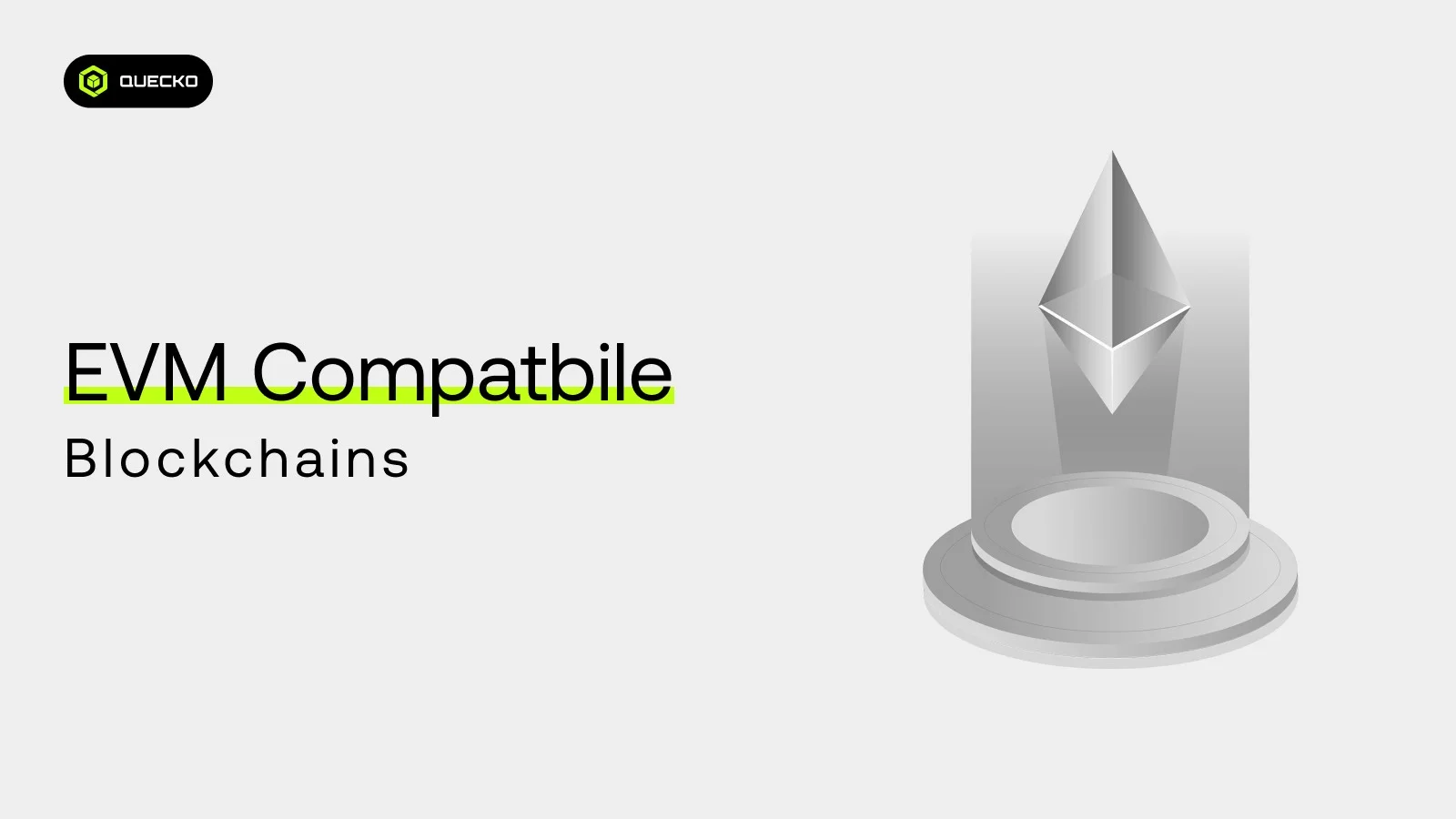Comparing EVM-Compatible Chains: Choose Where You Should Launch Your Web3 App
Compare EVM-compatible chains to find the best platform for your Web3 app based on cost, speed, and security.

When it comes to choosing a blockchain for their decentralized applications (dApps), developers and startups appear to have many options thanks to the development of Web 3. Although Ethereum remains the most widely used smart contract platform, several new chains compatible with EVMs provide their ecosystems. In addition to being compatible with Solidity and EVM tools, these chains offer reduced fees, faster transaction speeds, and some degree of modularity.
If you are developing a Web3 app, what criteria will guide your choice of a platform? Should you go with the original and enduring Ethereum? Or would you consider newer alternatives, such as Arbitrum and Optimism, which are EVM compatible, alongside other competing names like Polygon, Avalanche, and BNB Chain?
This guide will navigate through the ecosystem map of the blockchains relative to their EVM compatibility while analyzing the pros and cons of each to equip you with the information needed to make a decision.
What is EVM Compatibility?
EVM stands for Ethereum Virtual Machine as a decentralized execution environment that provides blockchain-based execution of smart contracts on Ethereum. The EVM executes instructions on the Ethereum blockchain in a deterministic manner across distributed blockchain nodes automatically. The native compatibility of EVM enables blockchains to execute Ethereum-produced smart contracts without alteration outside of developer-written code.
EVM-compatible chains offer a seamless developer experience by supporting the entire Ethereum developer stack, including:
- Solidity, the most widely used smart contract language.
- Hardhat and Truffle, robust frameworks for developers for compiling, testing, and deploying smart contracts.
- MetaMask, WalletConnect, and other Ethereum wallets that integrate effortlessly with EVM-compatible networks for user onboarding.
- TheGraph for querying blockchain data via subgraphs, and infrastructure services like Infura, Alchemy, and QuickNode for fast, scalable node access.
- Remix IDE for in-browser smart contract development and debugging.
- OpenZeppelin, a standard library of secure and audited smart contracts for governance, ERC tokens, and access control.
EVM compatibility allows developers to copy-and-paste their existing code, tools, and even security audits, cutting development time and transaction costs significantly. They can also easily deploy resources on multiple blockchains with a single set of tools, making their approach strategically multi-chain for optimal transaction volume and cost savings.
For users, the benefits of EVM compatibility span across the entire blockchain ecosystem. It allows users to enjoy the same experience with their wallets, cross-chain bridges, and DeFi applications across different ecosystems, making onboarding easier.
As stated earlier, EVM compatibility works on every blockchain, providing smart contracts with an identical framework, enabling blockchain application developers to build faster with improved interoperability, system integration, and ecosystem flexibility.
Why Consider EVM-Compatible Chains?
EVM-compatible chains are gaining popularity for several reasons:
- Scalability: Many offer faster transaction finality and higher transaction throughput than Ethereum Layer 1, supporting more users and real-time applications.
- Lower Fees: Transactions are significantly cheaper, often just a few cents or less, making dApps more accessible and cost-efficient.
- Ecosystem Support: Developers can use familiar tools like Solidity, Hardhat, MetaMask, and The Graph, enabling faster development and easier onboarding.
- Customizability: Some chains allow you to adjust parameters like gas fees, consensus models, and tokenomics, ideal for tailored or enterprise blockchain use cases.
- Interoperability: Many support cross-chain bridges and messaging protocols, allowing dApps to expand across blockchain platforms without starting from scratch.
- Incentives: Growing ecosystems offer grants, hackathons, and liquidity mining programs to attract blockchain developers and users.
Comparison of Top EVM-Compatible Chains
Transaction throughput, transaction cost, and developer experience are all important considerations when comparing various blockchain frameworks and EVM-compatible networks. Each of these blockchain platforms has a different user base, scalability solutions, and access to blockchain ecosystems, all of which have an impact on the functionality and expansion of your app.
1. Ethereum Mainnet
Ethereum is the original public blockchain and the foundation of the modern blockchain industry. It prioritizes decentralization and security above all, making it the most battle-tested environment for deploying critical dApps.
Pros:
- Most secure and decentralized smart contract platform
- Largest developer community and user base
- Highest TVL (Total Value Locked) in Decentralized Finance
- Strong brand and institutional adoption
Cons:
- High gas fees during congestion
- Slower transaction speed
- Scalability issues without Layer 2
Best for: High-value dApps needing maximum security and decentralization, like DeFi protocols, DAO governance platforms, and NFT marketplaces with strong reputations.
2. Polygon (PoS + zkEVM)
Polygon offers a PoS sidechain and multiple zero-knowledge (zk) scaling solutions. It’s one of the most mature and widely adopted EVM-compatible blockchains. Its low fees, fast finality, and strong developer ecosystem make it ideal for mass-market blockchain applications.
Pros:
- Extremely low transaction costs
- Fast block time
- Broad ecosystem with DeFi, GameFi, and NFT dApps
- Active partnerships (e.g., Reddit, Nike, Starbucks)
Cons:
- PoS chain is less decentralized than Ethereum
- Occasional network congestion
Best for: Consumer apps, blockchain games, NFT platforms, and DeFi protocols prioritizing UX and scale over maximal decentralization.
3. Arbitrum
Arbitrum is an optimistic rollup that inherits Ethereum’s security but offers higher throughput and lower transaction fees. It’s one of the most widely used Layer 2 (L2)scaling solutions, with strong adoption among DeFi protocols like GMX and Uniswap. Its growing ecosystem and support for native Arbitrum tooling make it a solid choice for scalable, Ethereum-aligned applications.
Pros:
- High compatibility with Ethereum
- Rapidly growing EVM-compatible network
- Near-instant transaction finality
- Strong developer incentives via Arbitrum DAO
Cons:
- Withdrawal delays (7-day challenge period)
- Still reliant on a centralized sequencer (though a decentralization roadmap exists)
Best for: DeFi platforms and dApps targeting Ethereum’s audience but needing scale; ideal for projects requiring security parity with Ethereum.
4. Optimism
Another leading optimistic rollup similar to Arbitrum, Optimism is aligned closely with Ethereum’s long-term roadmap. It powers key public goods initiatives and reinvests part of its revenue into ecosystem growth through the Optimism Collective. With low fees, fast transactions, and strong ETH-native support, it’s a great fit for projects that value decentralization and community-driven development.
Pros:
- Low gas costs
- Easy migration from Ethereum
- Strong alignment with the Ethereum Foundation and public goods funding
- Optimism Collective incentivizes open-source builders
Cons:
- Same withdrawal delay challenge as Arbitrum
- The network is occasionally congested during popular launches
Best for: Public goods, infrastructure, and dApps emphasizing Ethereum-native values and long-term vision alignment.
5. Avalanche (C-Chain)
Avalanche’s C-Chain is EVM-compatible and supports subnets, allowing developers to create customized, application-specific blockchain environments. It offers sub-second finality and high throughput, making it suitable for high-performance dApps. Its flexible architecture attracts GameFi, enterprise, and DeFi projects seeking more control over their blockchain infrastructure.
Pros:
- Sub-second finality
- Scalable via subnets
- Popular in GameFi and DeFi
- High throughput
Cons:
- Smaller ecosystem compared to Ethereum or Polygon
- C-Chain gas fees can spike during high usage
Best for: Projects needing high throughput or custom chain logic (e.g., GameFi, enterprise apps).
6. BNB Chain
Binance Chain originally operated under this name before it became BNB Chain, which stands today as a centralized EVM-compatible blockchain system that enables fast transactions at low costs. The platform supports many wallets alongside exchange, with both substantial user membership and solid transaction liquidity. BNB Chain enables decentralized apps and token launches to scale up through centralized management despite losing decentralization features.
Pros:
- Extremely low fees
- Large user base (especially retail)
- Easy integration with the Binance exchange
- High liquidity for tokens
Cons:
- Centralized validator set
- Security concerns with hacks and exploits
Best for: Retail apps, token launches, borrowing protocols, and gasless transactions.
7. Fantom
Fantom uses a DAG-based consensus mechanism (Lachesis) and supports near-instant finality, positioning itself as a high-performance EVM-compatible chain. It’s particularly suited for DeFi apps and real-time applications that demand speed and low fees. While moderately decentralized, its lightweight infrastructure appeals to developers building fast, scalable dApps.
Pros:
- Low fees and fast finality
- Unique ABFT consensus mechanism
- Growing DeFi ecosystem
Cons:
- Smaller blockchain community and ecosystem
- Limited institutional presence
Best for: DeFi and dApps looking for high-speed, cost-effective execution with EVM support.
8. Gnosis Chain
Previously known as xDai, Gnosis Chain is a low-cost, community-driven EVM-compatible network focused on accessibility and decentralization. It’s a preferred choice for DAOs, public goods projects, and governance tools due to its stable fees and strong alignment with Ethereum values. Its vibrant community and emphasis on long-term sustainability make it ideal for mission-driven applications.
Pros:
- Very low fees
- Long-standing community and blockchain projects (e.g., Gnosis Safe)
- Good for DAOs and governance tools
Cons:
- Smaller ecosystem
- Limited mainstream adoption
Best for: DAOs, public goods, and mission-aligned blockchain in terms of decentralization.
Choosing the Right Chain: Key Considerations
Choosing a blockchain network demands decision-making between three factors that include both speed and cost-effectiveness of operations, and a suitable architectural design for the dApp. Success in blockchain development depends on selecting the right platform according to your requirements of speed, privacy, and ready-made resources with robust developer tools.
Security vs Cost
If your project requires customizability or dedicated infrastructure (e.g., app-specific chains or unique tokenomics), Avalanche’s subnet architecture is a strong fit. For DAO tooling, community governance, or experimentation with public goods, Gnosis Chain provides a highly decentralized and mission-aligned environment.
Audience Location
If your dApp relies heavily on composability with other DeFi protocols, sticking to Ethereum or its rollups ensures smoother integration. Projects seeking aggressive ecosystem support and developer grants may benefit from launching on newer chains with active incentive programs.
Tooling and Infrastructure
Chains like Polygon, Arbitrum, and Avalanche have strong integrations with The Graph, Chainlink, and blockchain infrastructure tools, enabling easier indexing, oracle access, and analytics. Others like Gnosis Chain or Fantom may have more limited plugin ecosystems, which can affect developer speed or require custom integrations. However, these chains often offer more flexibility and lower competition, making them attractive for niche Web3 apps or experimental projects.
Governance and Roadmap Alignment
If your project is community-focused or aligned with Ethereum’s ethos, chains like Optimism and Gnosis Chain may be ideal. If you prioritize customizability or enterprise control, Avalanche subnets may be a better fit. For speed-critical consumer apps, Fantom or BNB Chain can offer a smoother user experience with minimal latency. Additionally, Polygon remains a solid middle ground with strong brand partnerships, low fees, and broad tooling support.
Liquidity and DeFi Integration
Launching a DeFi app? Choose a chain with strong liquidity pools, bridges, and aggregator support. Ethereum, Arbitrum, BNB Chain, and Polygon are top picks here. These networks have deep integrations with platforms like Uniswap, Curve, 1inch, and SushiSwap, ensuring access to capital and seamless token swaps. Also consider chain-native incentives and user activity levels to maximize traction.
Multi-Chain and Interoperability Considerations
Users and liquidity now operate across multiple webs in the Web3 world due to its expanding multi-chain structure. Developers typically begin developing dApps on one EVM-compatible chain until they need to use bridges while adding support for LayerZero cross-chain messaging alongside Wormhole and Chainlink CCIP via modular application programming. The method achieves maximum reach while decreasing risk levels while accessing multiple ecosystem types.
Tips:
- Design your contracts to be upgradeable and modular using patterns like proxies or the Diamond Standard (EIP-2535) to support iteration and multi-chain deployments.
- Leverage cross-chain infrastructure (e.g., Axelar, LayerZero, Hyperlane) to sync state, messages, or tokens between chains securely and efficiently.
- Choose EVM chains that already support major interoperability protocols, such as LayerZero or Chainlink CCIP, to simplify future cross-chain expansion without needing major rewrites.
- Use multi-chain wallets and SDKs (like RainbowKit, WalletConnect v2, or web3modal) to give users seamless access regardless of the chain they’re on.
This multi-chain mindset not only improves scalability but also positions your dApp for long-term success in a fragmented, composable ecosystem.
Conclusion: What’s the Best Chain for You?
The decision to choose an EVM-compatible chain does not follow a standardized approach. Your app’s specific needs determine which EVM-compatible chain represents the optimal selection.
Ethereum, together with Arbitrum and Optimism, stands among the foremost options for DeFi apps that need to secure major digital assets and provide comprehensive composability features. The low fees and quick performance of BNB Chain and Polygon, and Avalanche make them suitable for developing NFTs and games, and consumer apps that want to scale their users.
For DAOs and governance-focused projects, Gnosis Chain, together with Ethereum and Optimism, gives you the required decentralization features alongside community tools. The high-speed applications benefit from Fantom, Avalanche, and BNB Chain because they offer both fast performance and near-instant finality.
Developers who work on community-focused projects or public goods tend to use Optimism or Gnosis Chain because they agree with the mission and open-source nature of both platforms. Applications that target retail users together with token-based applications, function best on BNB Chain and Polygon due to their extensive reach and network alliance systems.
In the end, choosing the right chain early can greatly impact your dApp’s performance, adoption, and scalability over time.
Date
6 months agoShare on
Related Blogs

How Businesses Can Build Scalable DApps and Smart Contracts
9 days ago

AI And Blockchain Synergy: Building Smarter & Transparent Systems
10 days ago

The Quantum Leap: How Blockchain Must Evolve to Stay Secure
13 days ago

From Followers to Owners: The New Era of Social Media
15 days ago








